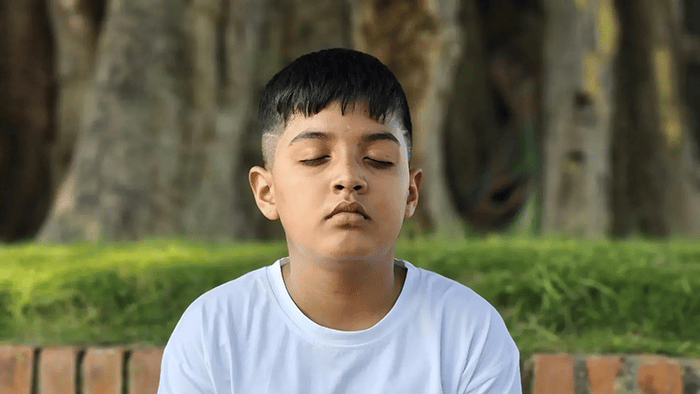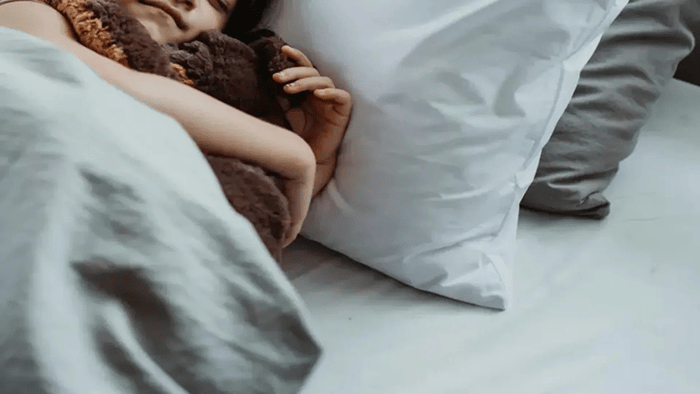- Breathing
- Focus And Distract
- Three Things To Remember
- Sensory Techniques
- Singing A Familiar Song/ Lullaby
Introduction
Many times, parents fail to recognize early symptoms of anxiety in their children. Prolonged exposure to a constant state of anxiety can cause various other problems, and a child can suffer mentally and physically. Due to extreme overthinking and tension, a child can even faint or have seizures.
Panic and anxiety attacks are common in children affected by anxiety for longer periods of time. Parents need to understand that anxiety will not go on its own after the child is feeling happy. Happiness will help the child distract from their anxiety, giving them a moment of peace, but it is essential for parents to constantly work up on the child's anxiousness to help them stay healthy.
Here are some techniques to manage a child in the middle of an anxiety attack.
Parents should encourage healthy unwinding activities and emotional coping mechanisms to help children better manage their emotional stability. Journaling is also one of the better ways to manage anxiety in kids, which can help them live in an organized and positive way. Know more about it.
What Is An Anxiety Attack?

Parents need to recognize the pattern of anxiety attacks and understand it better to make their children feel safe. Anxiety attacks can happen differently in every child who is suffering from a state of anxiousness.
- Observing the behavioral pattern before, after, and during the attack is crucial. Some children go into a state of sheer panic, where they start shivering or even faint due to these attacks.
- In contrast, others will dissociate or become slightly schizophrenic while having a seizure during extreme attacks.
- Mild attacks can cause a child to faint for a few seconds or sweat profusely.
- Anxiety attacks can also cause fever along with other physical symptoms like clumsiness and more.
- Parents can also observe that before or after these anxiety attacks, there is a specific behavioral pattern that the child follows.
For example, before the anxiety attack, the child is over-anxious or is in a constant state of overthinking. After the attack, the child is primarily confused and scared. Every child has a different pattern, but what remains common is the overwhelming feelings of anxiousness and fear, which the child or the child's physical body cannot bear.
How And Why It Triggers In Children? Reasons
Here are some of the reasons that can trigger anxiety attacks in children:
- A harsh environment or bad outcomes for something that children already fear can put them into a state of more fear.
- Anxiety attacks can also be triggered due to overthinking or negative provocation.
- Children can also get anxiety attacks due to procrastination.
- Children can also get anxiety attacks easily when they are in a weak physical state.
- The outburst of pent-up emotions, hidden feelings, and grudges can also make the child panic.
- Bullying can also put the child into a state of excessive fear, triggering anxiety attacks.
Calming Techniques To Manage A Child In The Middle of An Anxiety Attack
Here are some of the techniques to manage a child in the middle of an anxiety attack that parents should know about:
Breathing

Helping children focus on breathing can slow down the effect of anxiety attacks with proper control over the mind. Excessive or fast breathing can lead the child more towards anxiousness. It can be a great way for the child to self-manage and subdue the attack during the early stage.
Focus And Distract
As mentioned earlier, anxiety attacks happen in a particular pattern. Parents can help children recognize these patterns and help children shift their focus early to avoid fainting spells during attacks. Quickly adjusting focus or distracting your child is a great way to reduce mild anxiety attacks.
1. By Objects:
Children can shift their focus to valuable objects, triggering happy memories. This can help them calm down by getting assurance faster.
2. By Person:
Having a parent or a person close by the kid can help them feel secure during attacks. This can help them with a sense of belonging and care.
3. By Memories:
Train your child to think about happy memories whenever they are disassociated during anxiety attacks. This can help them feel calm, collected, and happy; giving them hope and reducing their fear.
Three Things To Remember
It is a common observation that a child when going through an anxiety attack if they are conscious, tries to resist it. Teach your children various coping mechanisms while they go through anxiety attacks to calm them down quickly. Help your kids with this technique where they try to remember three things they love the most, three things they have, and three people who are close to them. Thinking about these three things will help the children with self-assurance that there is nothing to worry about, calming the attack quickly.
Sensory Techniques
If the child is prone to faint spells during anxiety attacks, these techniques can be helpful to wake them up. Sensory stimulation can help children come back to their senses quickly.
1. Pinching:
Children can pinch themselves when they feel they are dissociating and going through a panic attack.
2. Touching Cold Objects:
Touching something cold can also give the body a sensory shock, which can help to calm the child during an anxiety attack.
3. Weighted Blanket:

Children going through extreme panic attacks and seizures can be helped with weighted blankets with the same effect.
Singing A Familiar Song/ Lullaby
Singing shooting music familiar to the child from an early age or a lullaby can help the child feel safer, reducing the effects of panic attacks. Different types of familiar songs and lullabies can help children gain a sense of assurance amidst the state of panic.
Conclusion
One of the major things to remember while trying out these techniques to manage a child in the middle of an anxiety attack is to help the child be mentally prepared for these attacks. Helping them be prepared can decrease the effect of these attacks by half. Practice various breathing techniques beforehand while role playing with kids to make them ready to fight anxiety with careful guidance.
Describe some methods to do this
Smriti is a content writer who creates clear, practical, and informative content backed by science and relevant data. With a strong understanding of structured writing, she breaks down complex topics into simple, actionable insights. Her work is focused on helping readers prepare, learn, and grow with confidence and clarity.
The views expressed are that of the expert alone.
The information provided in this content is for informational purposes only and should not be considered a substitute for professional medical advice, diagnosis, or treatment. Always seek the advice of your physician or another qualified healthcare provider before making any significant changes to your diet, exercise, or medication routines.
References










